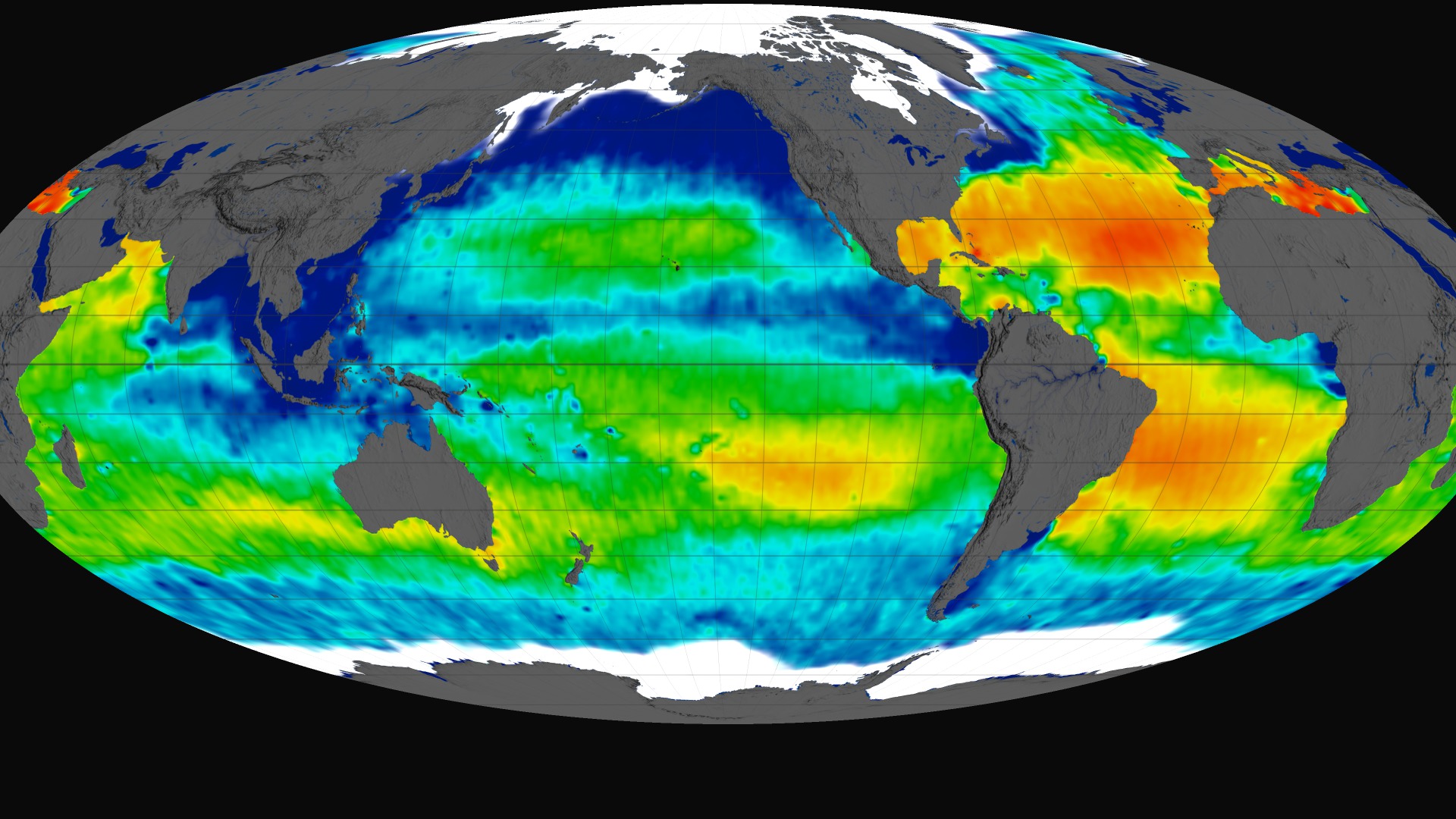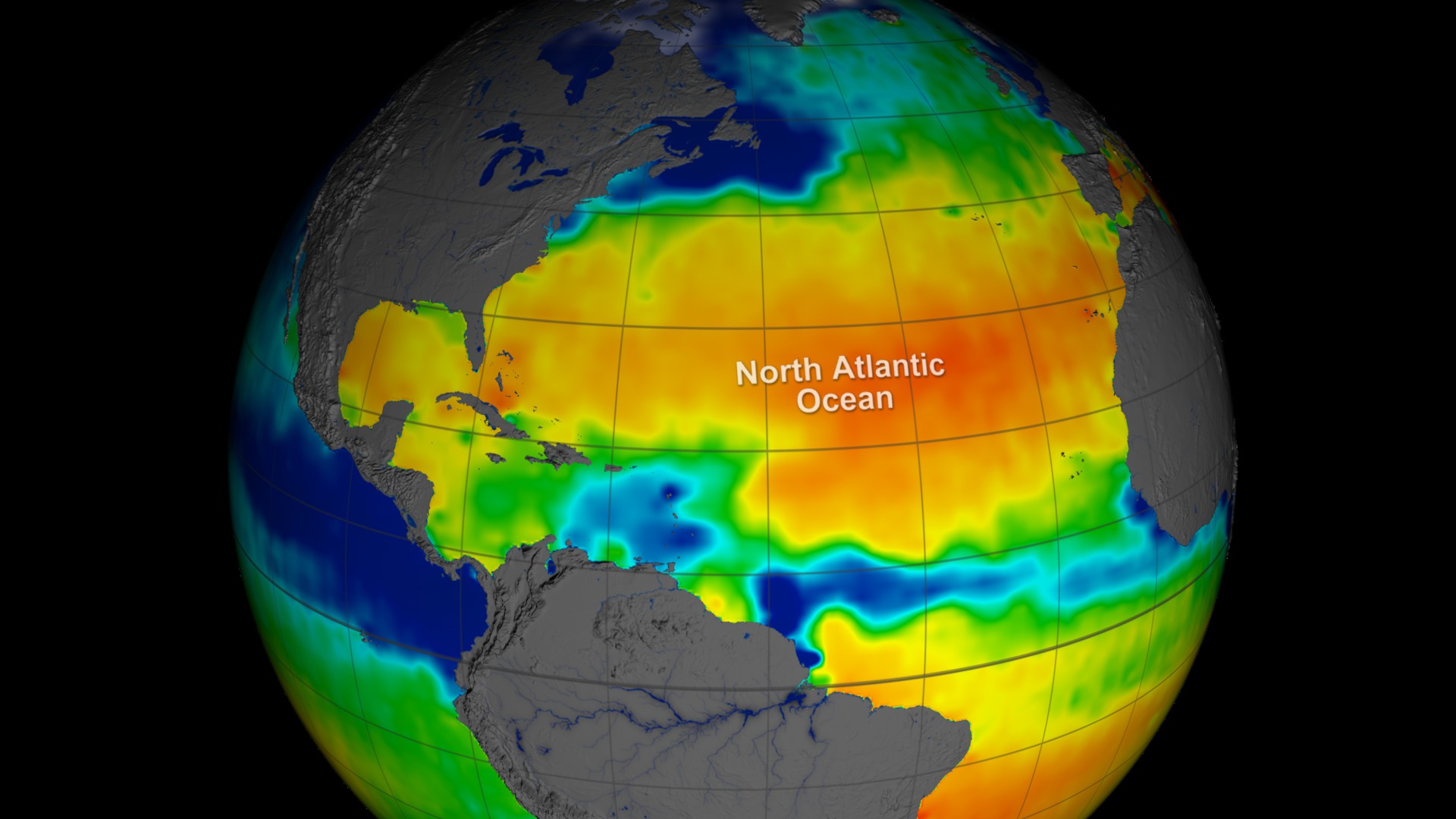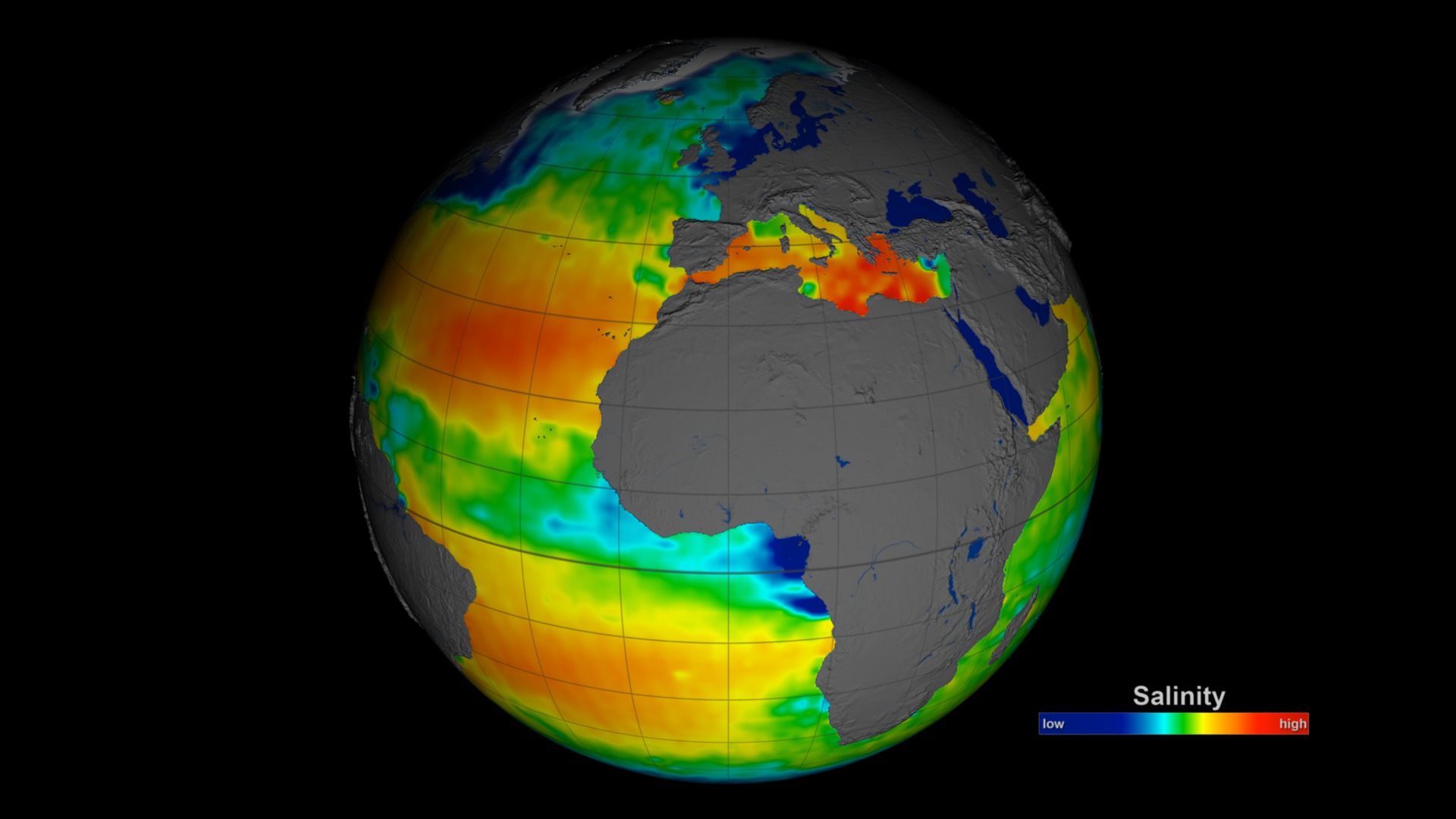Salty Motion
The saltiness of the sea surface varies depending on where and when you're looking. Heavy rainfall, river outflows, ocean currents, sea ice melt, evaporation and other seasonal phenomena can all alter salinity—and scientists can now see these changes in clear detail. NASA's Aquarius mission has collected the agency's first full year of satellite ocean surface salinity measurements, revealing a colorful and dynamic portrait of our salty seas. Salinity shifts, a powerful driver of global ocean currents, are also a fingerprint of variations in Earth's fresh water cycle, providing valuable information on how a changing climate is altering global rainfall patterns. Before Aquarius, researchers had only snapshots of the ocean's salt content variations. With global satellite measurements, they will now be able to see how salinity changes over time. Watch the video to learn more about our ocean's salty motions.

The rapidly evolving ocean salinity shifts come to life through Aquarius' first year of data.
Take a global tour of ocean salinity, courtesy of Aquarius data. Red represents the highest surface salinity; blue represents the lowest.

The large region of high salinity that stretches across the North Atlantic is the saltiest spot in the open ocean.

The Amazon River releases a fresh water plume that heads toward Africa or bends up to the Caribbean depending on the prevailing currents.

The seasonal melting of sea ice causes a sharp decrease in sea surface salinity in the Labrador Sea and the coastal waters of Greenland.
For More Information
See NASA.gov
Credits
Please give credit for this item to:
NASA's Goddard Space Flight Center
-
Animators
- Greg Shirah (NASA/GSFC)
- Horace Mitchell (NASA/GSFC)
-
Narrator
- Chris Meaney (HTSI)
-
Producer
- Kayvon Sharghi (USRA)
-
Scientists
- Gary Lagerloef (ESR)
- Gene Feldman (NASA/GSFC)
- Norman Kuring (NASA/GSFC)
-
Writer
- Maria-Jose Vinas Garcia (Telophase)
Release date
This page was originally published on Tuesday, March 12, 2013.
This page was last updated on Wednesday, May 3, 2023 at 1:52 PM EDT.


